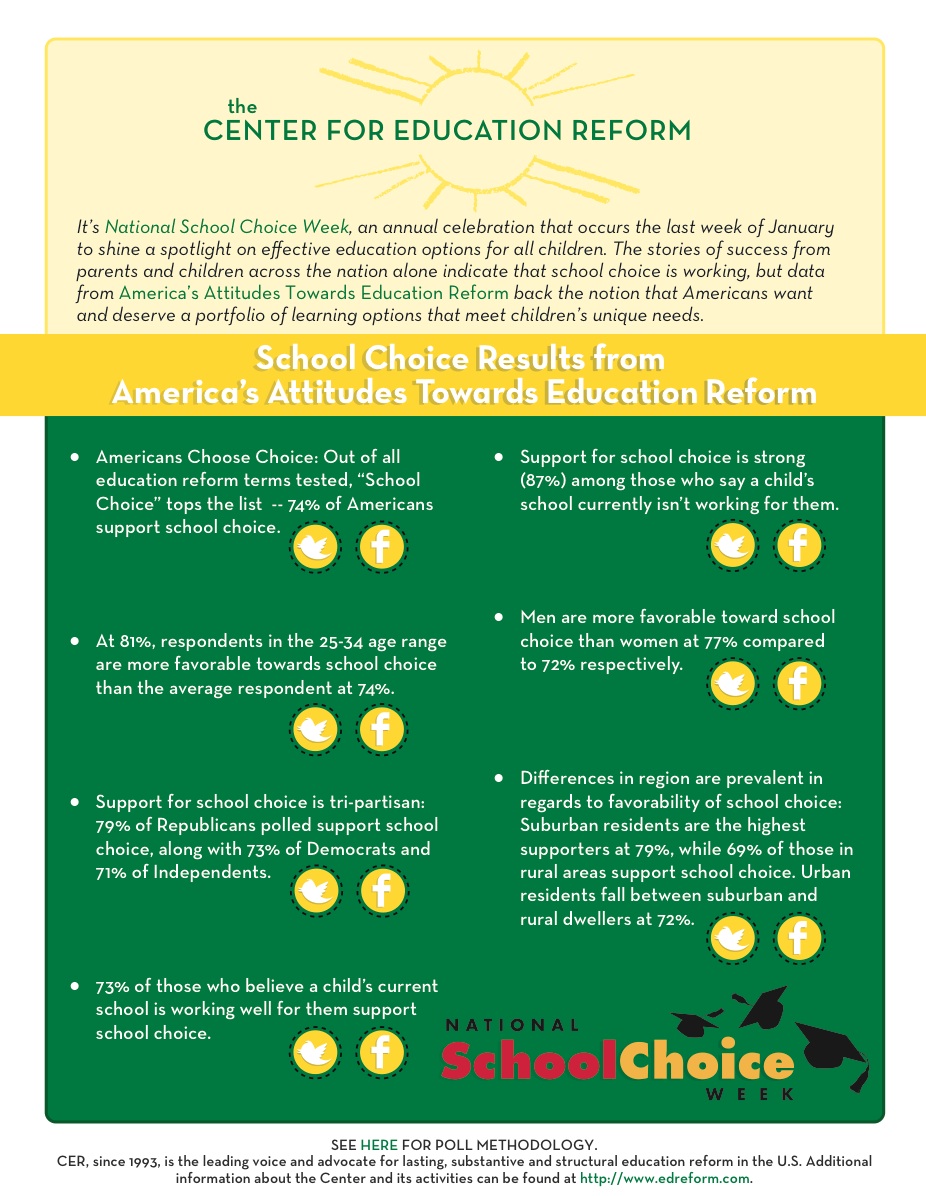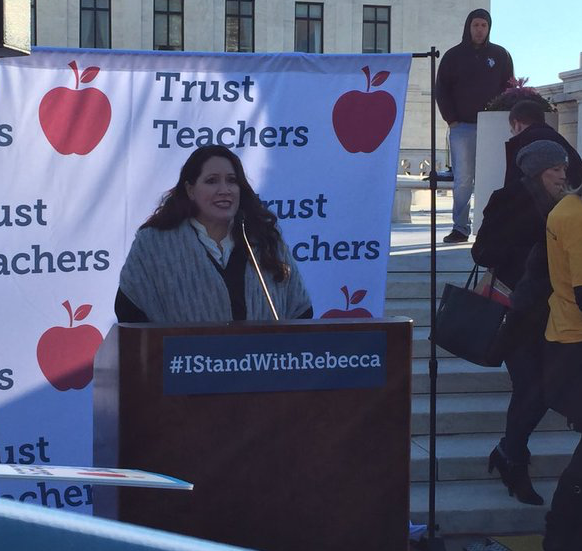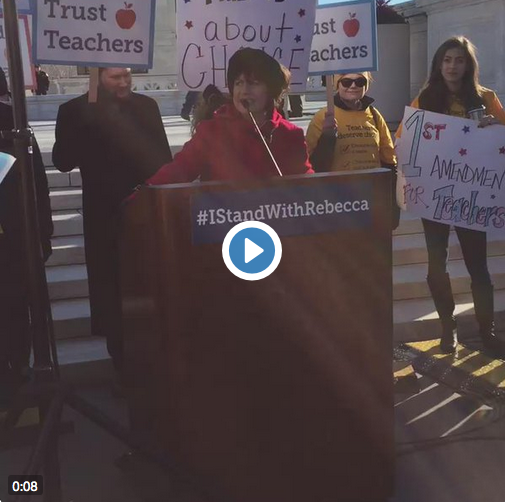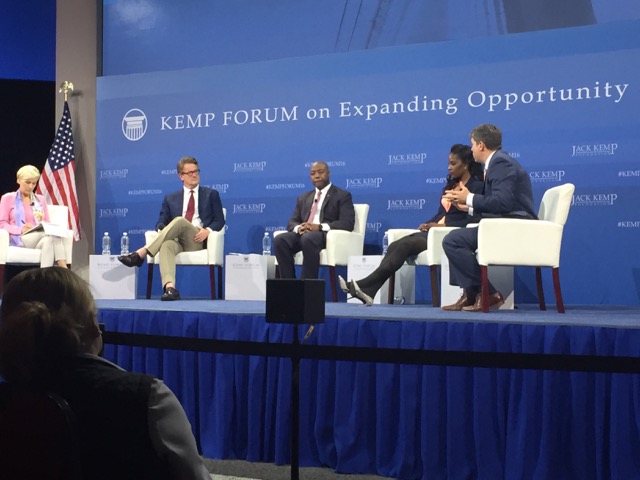
Our nation’s future depends on great educational opportunities for all children. Every year in January, National School Choice Week celebrates and shines a spotlight on effective education options of all varieties — traditional public schools, public charter schools, online, blended, and virtual schools, homeschooling, and any other type of learning innovation helping children excel.
National School Choice Week 2016 (January 24-30) is already the world’s largest celebration of educational opportunity in history, with more than 16,000 events planned.
To celebrate, CER is highlighting numerous and diverse choice opportunities in education all week — from towns to nations. Check back here daily for updates, starting Monday!
Story #1: A Family’s Choice
Story #2: A Leader’s Choice
Story #3: A School of Choice
Story #4: National Lawmakers Championing Choice
Story #5: Choice Internationally
GET INVOLVED!
- Find an event near you: https://schoolchoiceweek.com/map
- Add your voice to the largest ever #SchoolChoice conversation happening on social media!
- Get educated: learn the facts about school choice & share them with the click of a button!
 Watch & share the official NSCW 2016 kickoff video
Watch & share the official NSCW 2016 kickoff video 












 #RALLYINTALLY. Over 10,000 parents, children, teachers and reform advocates gathered in Tallahassee, FL this morning in support of their state’s tax credit scholarship program, currently helping nearly 80,000 students access an education that better meets their needs but is in the midst of a lawsuit brought on by the status quo. Martin Luther King, III was among those rallying to #DropTheSuit, telling
#RALLYINTALLY. Over 10,000 parents, children, teachers and reform advocates gathered in Tallahassee, FL this morning in support of their state’s tax credit scholarship program, currently helping nearly 80,000 students access an education that better meets their needs but is in the midst of a lawsuit brought on by the status quo. Martin Luther King, III was among those rallying to #DropTheSuit, telling 




